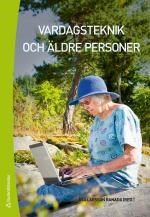Active ageing emphasises taking part in society, optimising health possibilities, involvement and security in order to achieve improved quality of life. More and more older people are, and will be, able to be active into older age. This also applies for people who are ageing with a lifelong functional disability. It is important for most elderly people to be able to stay in their own home for as long as possible. Remaining at home supports the individual’s habits, roles, activity and participation, despite limitations caused by illnesses and advanced age. In the public sector, and in society as a whole, there is great confidence that technological solutions are capable of increasing older people’s independence and help them to carry on living in their own home. Technological solutions can also contribute to increased accessibility and possibilities to remain in place, but also imply challenges for many older people.
Reasons for using existing technology may indicate how technology should be designed and introduced in order to increase usability for this group of users.
Existing technology changes when developments and adaptations are integrated in it. New user interfaces are developed and implemented which can simplify the technology, but also make it more complicated. In order for technology to prevent dependence, it needs to be used in a way that older people can recognise and accept. Achieving this will require more knowledge about how older people perceive and use technology, both that which they already have and newer technology. Being a technology user is an important part of being able to be active in society, even for people in the oldest old group, but there is still a shortage of studies into what technology means and how it can be used in the +80 age group. Older people themselves are significant actors in this.









